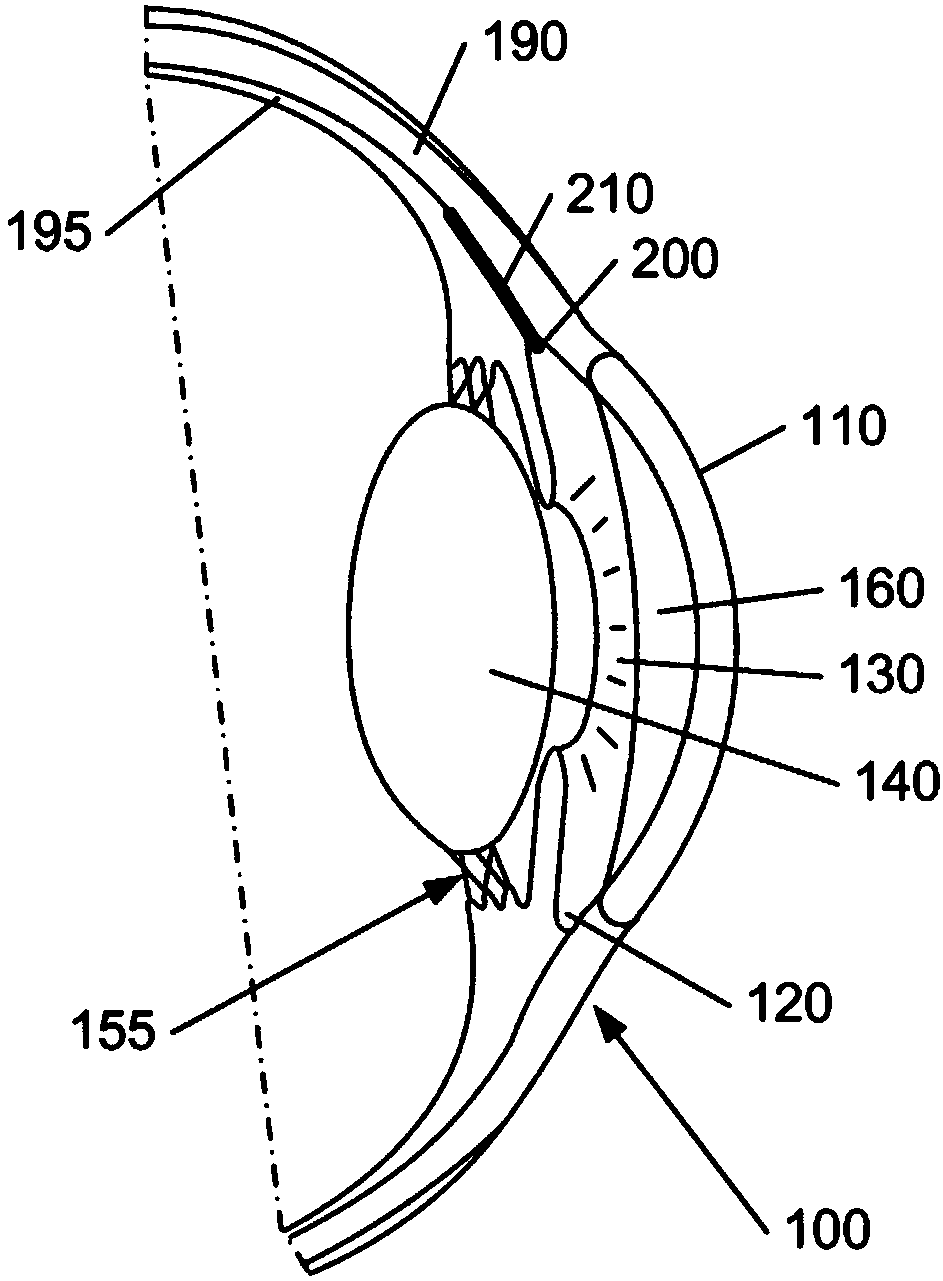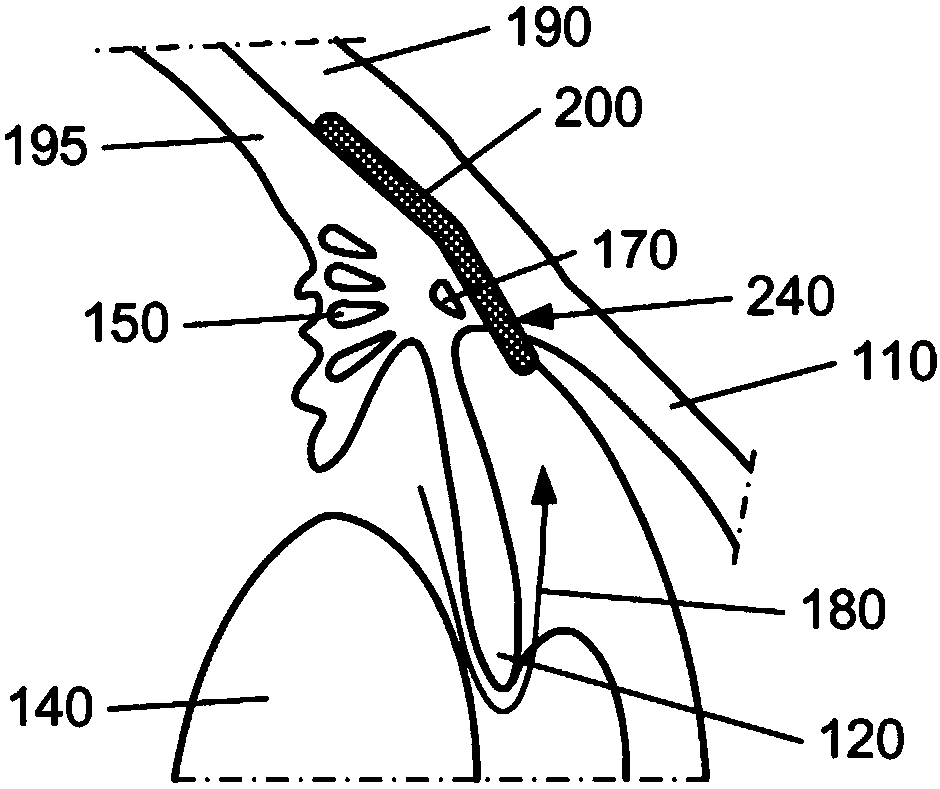Ocular implant system
A technology of implants and implanted devices, which is applied in the field of devices at predetermined positions, and can solve problems such as inability to provide
- Summary
- Abstract
- Description
- Claims
- Application Information
AI Technical Summary
Problems solved by technology
Method used
Image
Examples
Embodiment Construction
[0067] The present invention will be described with reference to certain embodiments and with reference to certain drawings, but the invention is not limited to the specific embodiments and certain drawings. The drawings described are only schematic and non-limiting. In the drawings, the size of some of the elements may be exaggerated and not drawn on scale for illustrative purposes.
[0068]The present invention relates to a system comprising a single-use "minimally invasive" implant or deployment device from which an intraocular shunt device or implant is deployed into the suprachoroidal space—that is, the The space between the sclera and the choroid—in, or deployed into the subconjunctival space—the space between the conjunctiva and sclera of the eye. The intraocular shunt device or implant is preloaded within and released from a portion of the implant or deploy device, as will be described in more detail below. In one embodiment, the implanted or deployed device is singl...
PUM
 Login to View More
Login to View More Abstract
Description
Claims
Application Information
 Login to View More
Login to View More - R&D
- Intellectual Property
- Life Sciences
- Materials
- Tech Scout
- Unparalleled Data Quality
- Higher Quality Content
- 60% Fewer Hallucinations
Browse by: Latest US Patents, China's latest patents, Technical Efficacy Thesaurus, Application Domain, Technology Topic, Popular Technical Reports.
© 2025 PatSnap. All rights reserved.Legal|Privacy policy|Modern Slavery Act Transparency Statement|Sitemap|About US| Contact US: help@patsnap.com



